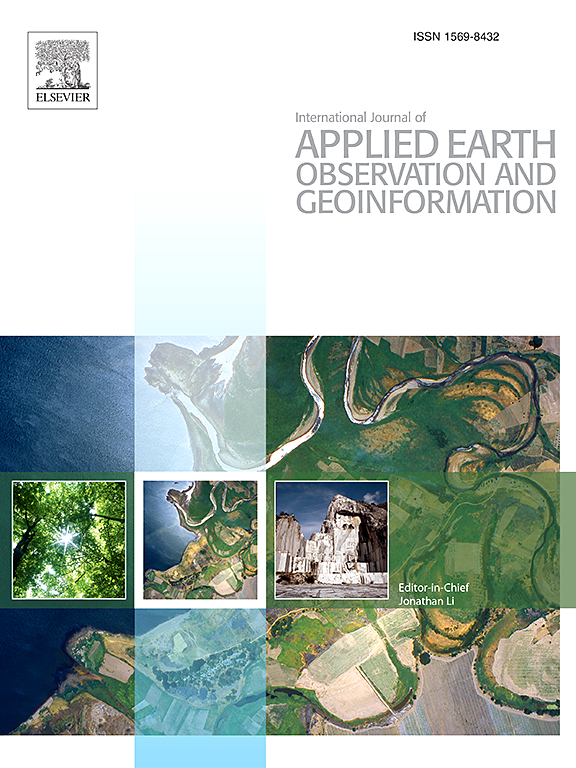Deep projective prediction of building facade footprints from ALS point cloud
IF 7.6
Q1 REMOTE SENSING
International journal of applied earth observation and geoinformation : ITC journal
Pub Date : 2025-03-19
DOI:10.1016/j.jag.2025.104448
引用次数: 0
Abstract
The automated extraction of building facade footprints (BFFs) is a critical task in surveying and remote sensing. Existing methods primarily use mobile laser scanning point cloud as the data source, with limited methods utilizing airborne laser scanning (ALS) data. This is mainly because current methods require explicit building extraction and wall detection, and the facade points in ALS point clouds are naturally sparse and prone to incompleteness, leading to insufficient robustness in rule-based wall extraction. To address this challenge, this paper presents an end-to-end method named deep projective prediction (DPP), which directly predicts BFF masks from ALS point clouds, avoiding explicit extraction of buildings and facades, thereby simplifying the BFF extraction process. Meanwhile, we introduce a back-projective attention (BPAtt) module that guides the decoding process while performing differentiable projections, enhancing the model’s sensitivity to projected feature locations. Additionally, a sparse feature completion (SFC) strategy is proposed to alleviate the impact of point cloud sparsity on footprint mask prediction. To validate the effectiveness of the DPP and facilitate relevant future research, an ALS-based BFF dataset is established, which provides more than 3k BFF annotations. Extensive experiments demonstrate that the proposed DPP achieves promising results on the BFF extraction task. The BPAtt module and SFC strategy also promote the BFF extraction performance, particularly at the boundaries of footprints.

求助全文
约1分钟内获得全文
求助全文
来源期刊

International journal of applied earth observation and geoinformation : ITC journal
Global and Planetary Change, Management, Monitoring, Policy and Law, Earth-Surface Processes, Computers in Earth Sciences
CiteScore
12.00
自引率
0.00%
发文量
0
审稿时长
77 days
期刊介绍:
The International Journal of Applied Earth Observation and Geoinformation publishes original papers that utilize earth observation data for natural resource and environmental inventory and management. These data primarily originate from remote sensing platforms, including satellites and aircraft, supplemented by surface and subsurface measurements. Addressing natural resources such as forests, agricultural land, soils, and water, as well as environmental concerns like biodiversity, land degradation, and hazards, the journal explores conceptual and data-driven approaches. It covers geoinformation themes like capturing, databasing, visualization, interpretation, data quality, and spatial uncertainty.
 求助内容:
求助内容: 应助结果提醒方式:
应助结果提醒方式:


